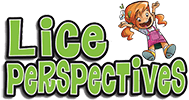A “No Nit” policy requires that students be sent home from school as soon as nits are discovered. The American Association of Pediatrics and the National Association of School Nurses advocate that the “No Nit” policies should be discontinued. These organizations recommend discontinuation because:
•Nits are cemented to hair shafts and are unlikely to be transferred to other people.
•The burden of unnecessary absenteeism to the students, families and communities far outweighs the risks associated with head lice.
•Misdiagnosis of nits is very common during nit checks conducted by non-medical personnel.
Many schools have discarded their “No Nit” policy because lice are not inherently dangerous and thus, in their opinion, do not warrant children missing school. Attendance is crucial to students’ earning higher grades and to schools receiving federal and state funding.
Lice Perspectives recommends a modified “No Nit” policy, with children being sent home for treatment at the end of the day rather than immediately (unless lice are discovered school wide). as the best way to reduce attendance/embarrassment issues and to prevent the spreading of lice.

